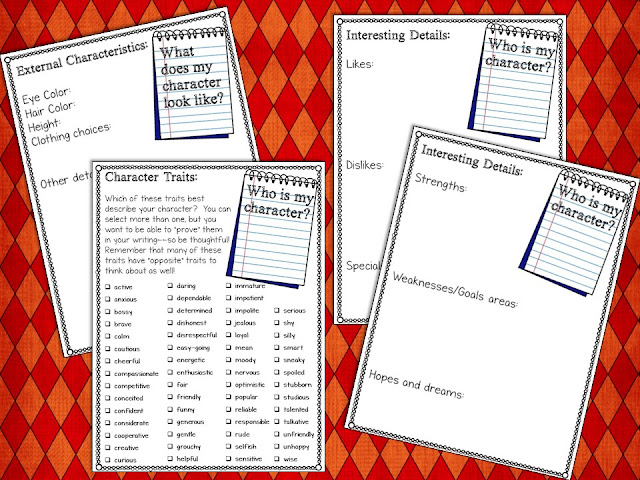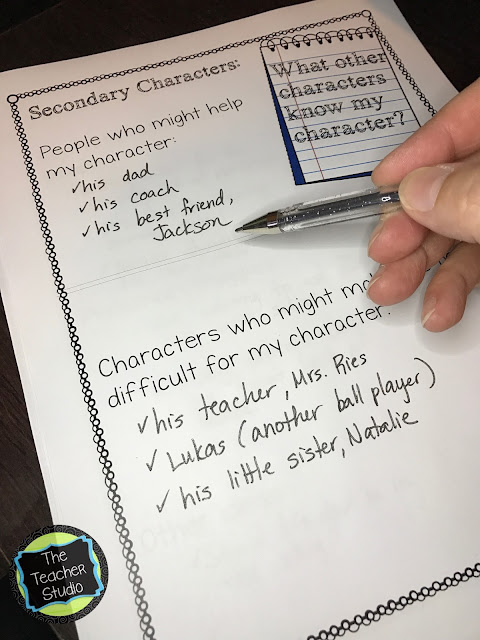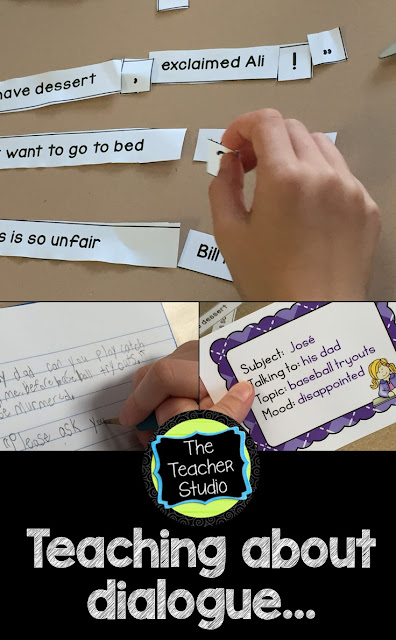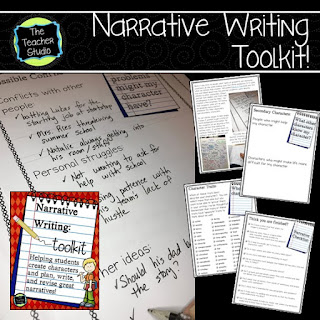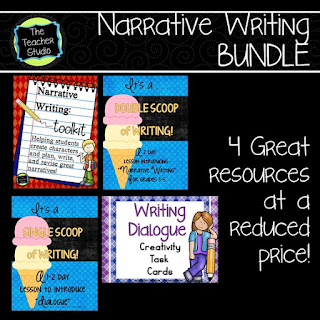Teaching narrative writing isn’t easy. Writing a story from start to finish can seem like a pretty overwhelming task–and it is! I’ve been working for years on how to make it more accessible and meaningful to my students. Let’s face it, writing stories for a living isn’t what 99% of them will be doing. That being said, the PROCESS of writing a story and the creative energy of planning one is super valuable–and, of course, there are many writing skills that cross genres. I thought I’d share what we did this year, and I’m trying to consolidate it without losing too much of the detail. Hope this all makes sense!
For the last few years I have used a planning tool that I turned into a resource which helps kick off the unit of narrative writing. It has been SUPER helpful for me as I try to set the tone for a writing community. At the same time, students start planning their stories. I still use it and it really helps my students with their planning. Now, I’ve even added a DIGITAL component so my students can do their planning on the computer OR using print resources!
Planning Our Narratives
As our curriculum has evolved a bit, I started looking for ways to really get my students digging into character development so that their narratives were richer and more thoughtful. We worked hard to try to get students to really think about a main character…who this person would be. What they would be like as people. We thought about what they would enjoy–and what they don’t. We pondered what their strengths are–and their weaknesses. As I started to jot down these ideas, I used our read aloud to try to see if we could see how a “real” author developed those characters.
Because we are reading Fish in a Tree, there are PLENTY of opportunities to talk about characters–both Ally as a main character and the several other important secondary characters. I started tracking what we knew about two of the characters (Ally and Shay) in terms of their “external” characteristics and their internal traits, interests, strengths, and more. We tracked the characters on these forms and learned some things. We learned that authors do NOT spend much time describing what characters look like. (I was thrilled when my students said, “That doesn’t really matter!”) Most of the clues that authors give are HINTED at (ah, “inferring”!). This led to some pretty interesting discussions about what WE need to do as writers. For one thing, we really need to focus on creating characters that we describe by giving our readers clues.
The Importance of Modeling
I decided that the best way to help show my students how to start creating such a character would be for us to work together to create one…I made new copies of these forms and, together we worked to “invent” a character under the document camera. This is really one of my favorite things to do–to write WITH my students. It’s a great way to get ALL students involved in the writing process…it takes the pressure of the actual WRITING away and lets even struggling writers be active participants. We did lots of “turn and talk” and then I let students share ideas and then I made final decisions and recorded our thinking.
After spending about half a class period “creating” this character, I had my students work to talk with small groups about the types of characters THEY wanted to create. I am kind of a stickler–I tell students that writers write about what they are experts in–so their characters need to be similar in age to them…they simply don’t know what it is like to be a teenager and deal with teenager problems. This keeps the stories much more realistic and saves a lot of tough discussions!
Time to Really Dig In!
After this, it was time to get to work. I broke this up into two days–where we worked through exterior “looks” of our characters and the trait list. It is always amazing to me how many students don’t know many of these vocabulary words…words like “conceited” and “compassionate”–so we work on those. I then tell them to pick ONE key trait that they will work to build…and one or two others that might show up in the story. We looked back at our study of Ally and realize that although the author paints her as a bit defiant and difficult, she also has her creative and compassionate side…so that was good food for thought as they picked.
Working Hard to Get Planned
The next day, we continued “getting to know” our new characters (I told my class that they should “know” their character so well that they would recognize them if they walked through the door!) and expanded our planning. We got back to work inventing “Danny”, my character by coming up with his likes and dislikes as well as special items or treasures he might have. We talked about characters we know and love–and went back to Ally to talk about her likes, dislikes, and special objects. I could really see that my students were starting to “get it” and they were itching to get to work on their own characters…so off they went to get creative. I kept this a pretty relaxed time…some worked alone, some brainstormed together, and then we came together at the end to talk about what we had accomplished.
The next step of our journey started to get us deeper into story planning–stories don’t tend to have just ONE character, so we talked at length about some of the secondary characters in Fish in a Tree and how Ally interacts with them. We talked about their traits, likes, and dislikes, and how they were important to the story. Then what? That’s right–time to invent some secondary characters for Danny! We really were getting close to having our narrative writing planned!
And Digging in More…
I love the idea of having students think about characters who can HELP the main characters, and those who make life difficult…as you know, this is what stories are made of! We had TONS of ideas for who might make life difficult for Danny…but we kept it simple. These are meant to be short stories, not novels after all! It was time for students to get to work…and I asked them to work with a partner to make sure their new characters seemed to “fit” with what they had already invented about their main character.
Next, it was time to decide what types of problems our character could have…all the while making sure that these problems fit in with what we already had created. We pulled Fish in a Tree back into the mix and talked about how Ally and her problems were directly related to other characters (Shay), and her own dislikes and traits (her unwillingness to ask for help). We created a few situations for Danny, then students went off to work on designing some perfect problems for their characters and secondary characters.
As our stories took shape, I wanted to get a little bit more background information for the students so we dug into a few books we had read looking for setting clues. I wanted them to continue thinking of this idea that authors “give hints” without just TELLING the reader…and then we created a chart to brainstorm ideas for the setting of “the ballpark”–and how to come up with descriptive words and phrases that could help a reader know we are there without really telling them.
Sharing, Teaching Dialogue, and More!
They had SO much fun…and got better and better as our sharing continued. When we were finished? Off to our writer’s notebook to start creating our settings!
The two other elements of writing that we tackled before we started writing were working on writing dialogue and planning a narrative with a story map. I won’t bore you with all the details…but if you are interested, I do have an old blog post that you can find HERE all about what I do!
Ready to Try?



